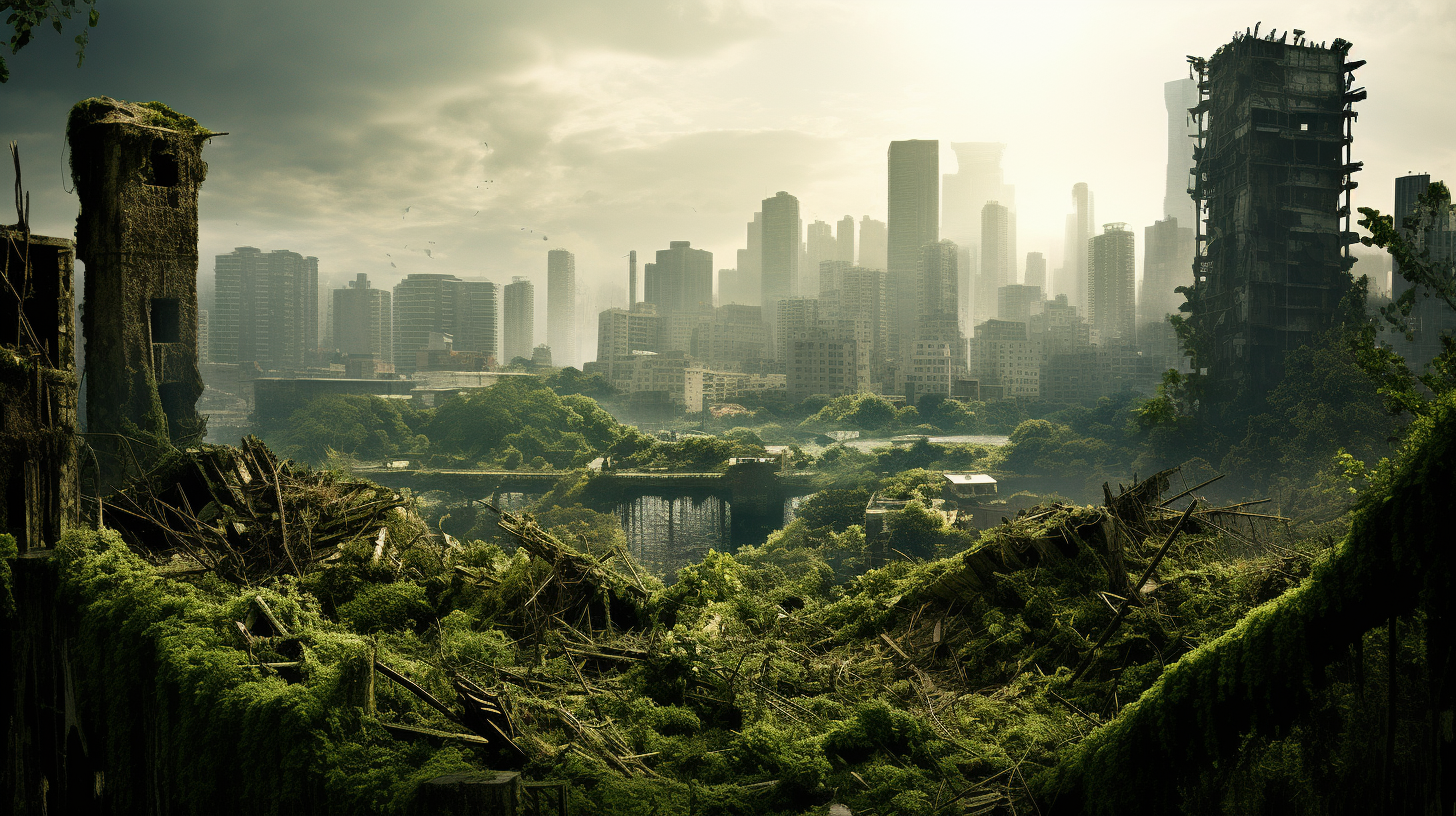In a poetic twist of fate, the concrete behemoths that were once graveyards of erstwhile flourishing ecosystems are now cradles of a curious resurgence. Yes, we’re talking about our cities – those labyrinthine clusters of steel and glass that had long usurped the greens. Nature is staging an unexpected comeback, but not in the quiet countryside or the remote wilderness. The newest chapter of rebirth is unfolding in our bustling urban centers. The ‘Urban Jungles’, as they’re now dubbed, stand as a testament to life’s enduring resilience even amidst our infrastructural sprawl.
Painting a surreal picture, roots weave through sidewalk cracks, vines drape over abandoned structures, and a chorus of birds now echoes where horns and sirens once dominated. The transformation is more than aesthetic; it’s a sign of vitality. Tall buildings, underused parking lots, and even the flat rooftops are morphing into habitats, providing sanctuaries to a mosaic of species. It’s as if the concrete has conceded, humbly handing back the reins to its ancient predecessor – the wild.
These evolutions spur discussions among environmentalists, urban planners, and citizens alike, grappling with questions of coexistence. As one urban ecologist puts it, We are witnessing a remarkable lesson in adaptability and cohabitation. This isn’t just nature taking root in the physical sense, but it’s a call for us to integrate this resilience into the fabric of our urban societies.
This shared sentiment is giving rise to initiatives that aim to harmonize urban life with the emerging greenery.
With biodiversity blooming amid the cityscape, a renewed interest in urban agriculture is sprouting. Rooftop gardens yield fresh produce while doubling as green oases, citizen science projects flourish, and community initiatives reclaim forgotten spaces, transforming them into verdant plots. If you look closely, you can see smiles budding on faces of city-dwellers alike, as they watch butterflies flit between high-rises. There’s a word for this phenomenon: ‘rewilding’. But it’s not just about encouraging plants and animals to return. It’s about changing our perspective, understanding that even in spaces we’ve dominated, nature has a pivotal role to play.
The ‘Urban Jungles’ are not only sanctuaries for migrating birds – remember the precariousness of their plight, as ‘Where Will the Birds Fly Next’ poignantly illustrated – but they’re also serving as a genetic reservoir. They are, figuratively and literally, an organic ark amidst the flood of climate change, ensuring that the seeds of the future can sprout from the heart of our metropolises. This resilience is invigorating, yet also serves as a subtle rebuke – a nudge reminding humanity of the world we could lose, and the world we still have time to save.
But will these ‘Urban Jungles’ merely remain quirky phenomena, delighting passersby and scientists for a transitory period? Or will they spark a profound shift in urban development and policy-making? That’s a chapter yet to be written. As it stands, the concrete jungle tills soil for seeds of thought and action – a stage for an urban renaissance both green and grand.
Enthralled by nature’s tenacity yet mindful of the precarious balance, we must nurture these ‘Urban Jungles’. There may be a grain of optimism in witnessing this revival, however accidental it may be. It’s up to us to ensure that this is not just a temporary blush of nature but the foundation of a sustainable symbiosis. After all, isn’t it a compelling thought that our grey mazes could indeed become green labyrinths? These urban jungles, sprouting up against all odds, could just be the reminder we need: Whilst the dystopian music plays on, there’s still time to change the tune.
